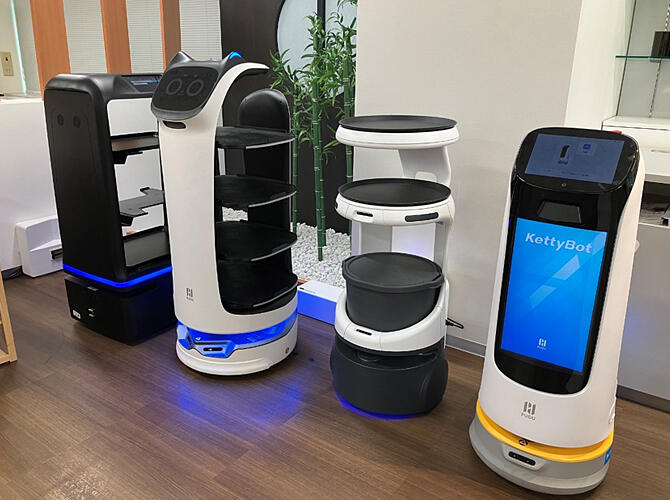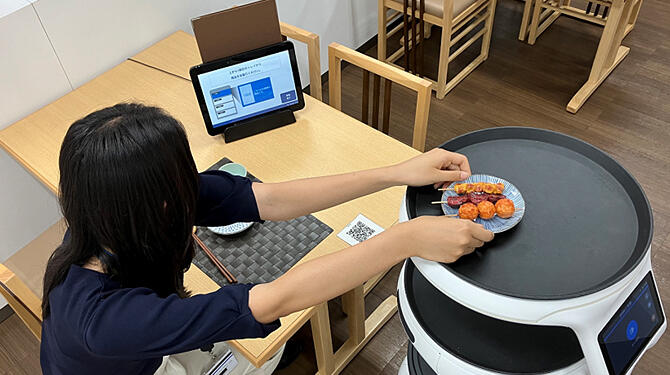NEC Platforms has realized a meal-serving multi-robot networking service that provides restaurant operations from taking orders to checking bills and networks several types of meal-serving robots, and the company began providing the service from August 10. It can be used at restaurants where 'FoodFrontia,' the Point of Sale (POS)-system order-entry system for restaurants provided by the company, has been introduced. The monthly fee for one robot (the standard fee excluding taxes) starts at 10,600 yen. Through this service, the company aims to introduce 3,000 units of meal-serving robots into restaurants within four years.

Provided by NEC
The service enables efficient operation of meal-serving robots through remote control and linkage with bill-checking function using handheld terminals and self-order terminals. For example, the service makes it possible to reduce the time required for bussing tables by about 40%, thereby contributing to the efficient operation of restaurants as well as to the enhancement of customer satisfaction. Furthermore, it is possible to use a self-order terminal to ensure that what will be served is confirmed before the meal is delivered by a meal-serving robot or to ask for a bussing robot to bus the table. The system also assists the wait staff members in reducing their work and enhances the comfort of the restaurant customers.
A series of functions are integrated with the meal-serving robots in the system, from taking orders to checking bills. This is the first of its kind in Japan. The company has applied for a patent for the part of the linking function with the meal-serving robots.
In the food and beverage industry, there has been a labor shortage for many years. One solution that has emerged is the introduction of meal-serving robots. These robots also aim to improve the labor environment. Introducing these robots will reduce the workload of wait staff members at restaurants. However, the bill-checking system or order-taking system may not be fully integrated with the robots at a restaurant. In this case, the wait staff members may have to visually inspect the status of their restaurant floor and provide instructions directly to the robots for serving meals or bussing tables. The connection between human workers and robots remains an unresolved issue.

Provided by NEC
Currently, this linkage service has achieved a connection between the restaurant-operating function of 'FoodFrontia' and the meal-serving robots manufactured by other manufacturers. This has made it possible to reduce the travel distance of wait staff members at a restaurant as well as to make the operation of the restaurant more efficient.
Furthermore, now that the linkage service can integrate various types of meal-serving robots. This allows a restaurant to select robots that are suitable for the size of the restaurant and use different types of robots simultaneously. This will enable a restaurant to efficiently utilize resources at the restaurant.
This article has been translated by JST with permission from The Science News Ltd. (https://sci-news.co.jp/). Unauthorized reproduction of the article and photographs is prohibited.




